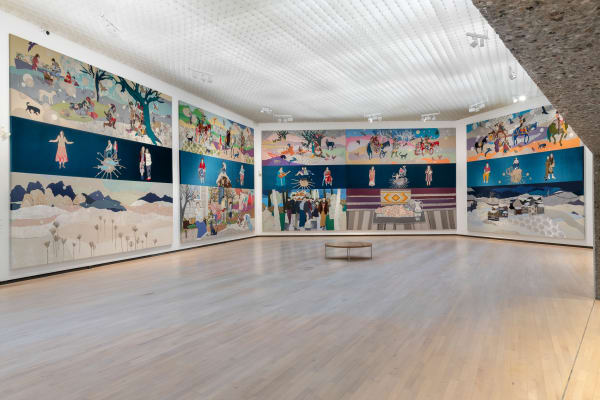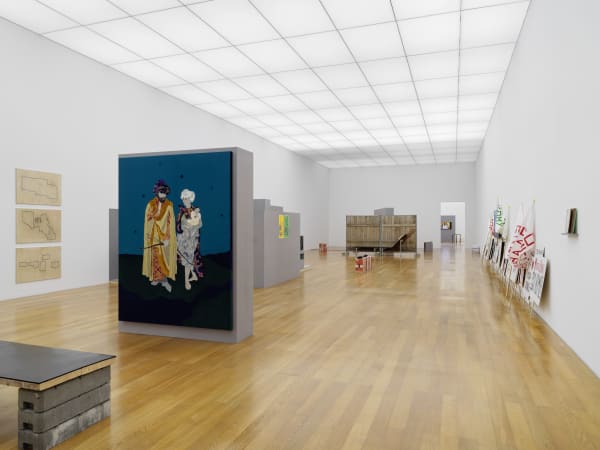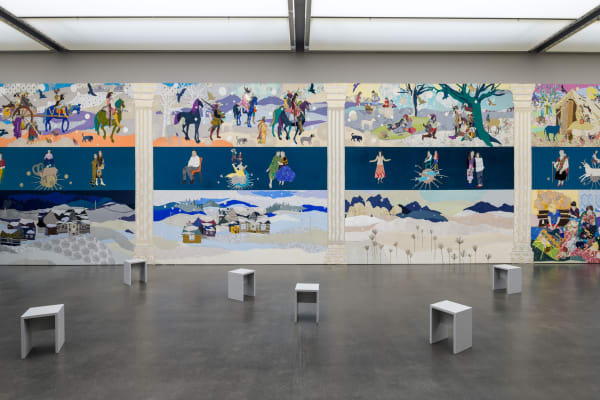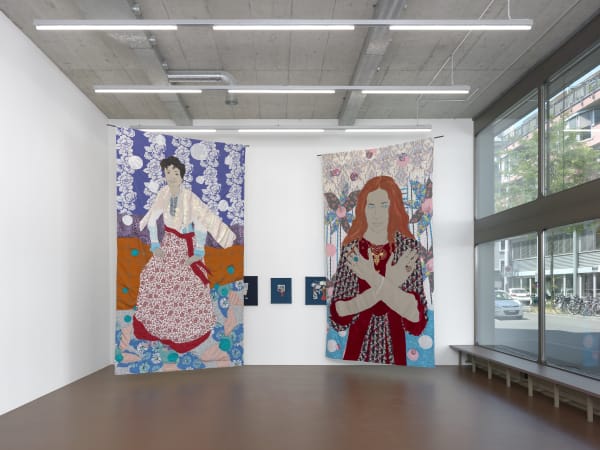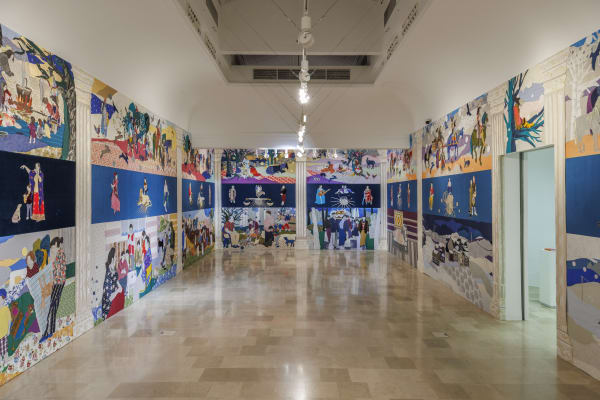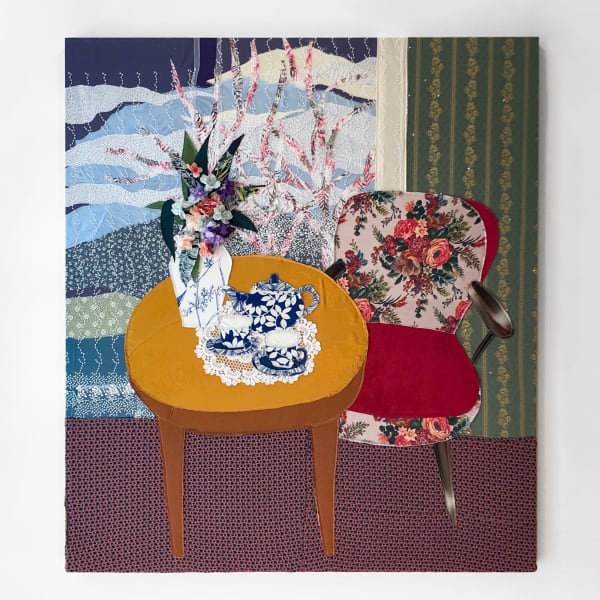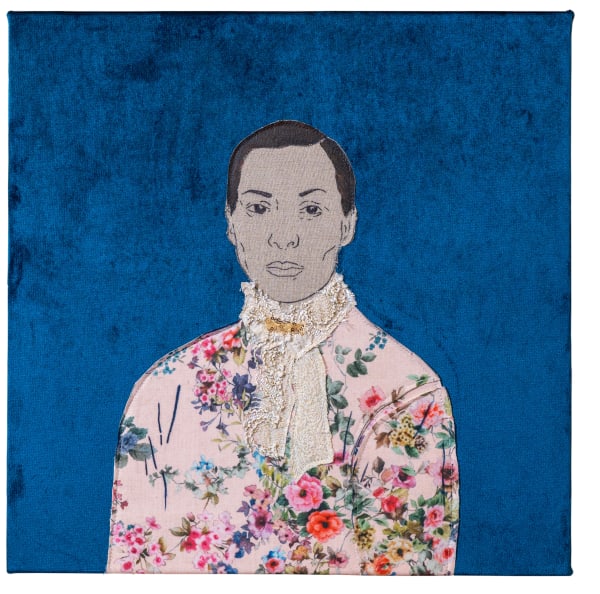Małgorzata Mirga-Tas b. 1978
-

Małgorzata Mirga-Tas
An Alternative Story
Kunstmuseum Wolfsburg, DE 22 Nov 2025 - 15 Mar 2026Kunstmuseum WolfsburgRead more -

Małgorzata Mirga-Tas
The Big Dipper Will Foretell the Future of the Roma
Collezione Maramotti, IT 12 Oct 2025 - 8 Feb 2026Collezione MaramottiRead more -

Małgorzata Mirga-Tas
The Bear's Trace
1 OCT - 1 NOV 2025
1 Oct - 1 Nov 2025Read more -

Małgorzata Mirga-Tas
An Alternative Story
Henie Onstad, Høvikodden, Norway 28 Jun - 2 Nov 2025Henie OnstadRead more -

Małgorzata Mirga-Tas
Tełe Ćerhenia Jekh Jag
Kunsthaus Bregenz, Bregenz, AT 7 Jun - 28 Sep 2025Kunsthaus BregenzRead more -

Małgorzata Mirga-Tas : Auf der Strasse
Group show
Kunstmuseum Liechtenstein
Liechtenstein 11 Apr - 31 Aug 2025Kunstmuseum LiechtensteinRead more -

Małgorzata Mirga-Tas
MAŁGORZATA MIRGA-TAS
Kunstmuseum Luzern 8 Mar - 15 Jun 2025Kunstmuseum LuzernRead more -

Małgorzata Mirga-Tas
MAŁGORZATA MIRGA-TAS
Tate St Ives 19 Oct 2024 - 5 Jan 2025Tate St IvesRead more -

Małgorzata Mirga-Tas
This is not the end of the road
Bonnefanten, Maastricht, NL, 2024 8 Jun 2024 - 16 Feb 2025“Małgorzata Mirga-Tas' first Dutch solo exhibition is a first of its kind. At the centre is the series Re-enchanting the World she made for the Venice Biennale. But there will...Read more -

Małgorzata Mirga-Tas
Västerås Konstmuseum, SE 17 Feb - 26 May 2024Read more -

Judith Bernstein, Gina Fischli, Małgorzata Mirga-Tas
Group Show 2 Feb - 28 Mar 2024 Weststrasse 70, Zurich, CHOpening Thursday February 1st from 6 to 8 pm.Read more -

Małgorzata Mirga-Tas
Remembrance and Resignification
Centro Andaluz de Arte Contemporáneo (CAAC), Sevilla, ES 29 Sep 2023 - 31 Mar 2024'Drawing on subordinated elements from the European heartland, the feminism of minorities, shared labour (such as collective weaving or quilting), and the environmentalism of reusing locally sourced second-hand fabrics, in...Read more -

Małgorzata Mirga-Tas
Sivdem Amenge. Ich nähte für uns. I sewed for us.
group show
Brücke-Museum, Berlin, DE 26 Jun - 3 Sep 2023Brücke-MuseumRead more -

Małgorzata Mirga-Tas
Some Roma Herstories 9 Jun - 18 Aug 2023 Weststrasse 75, Zurich, CHOpening June 8th, 6 - 8pmRead more -

Małgorzata Mirga-Tas
I HAVE A DREAM / SUNO MANGIE DZIALAS
Göteborgs Konsthall, Göteborg, SE 28 Jan - 16 Apr 2023'In textile works and paintings, Mirga-Tas seeks to counteract anti-Ziganist stereotypes and presents a personal picture of Roma life from a feminist minority perspective.' Göteborgs KonsthallRead more -

Małgorzata Mirga-Tas
Travelling Images, curated by Natalia Żak and Wojciech Szymański
International Cultural Center, Krakow, PL 2 Dec 2022 - 5 Mar 2023“Travelling Images” is the first solo exhibition of Małgorzata Mirga-Tas – currently the major representative of contemporary Roma art – after the great success at this year’s 59. Biennial of...Read more -

Małgorzata Mirga-Tas
From the series "Out of Egypt"
OFF- Biennale Budapest
Documenta fifteen, Fridericianum, Kassel, DE 18 Jul - 25 Sep 2022Read more -

Michel Auder, David Hominal, Małgorzata Mirga-Tas, Emanuel Rossetti, Xanti Schawinsky, Ser Serpas
Sketch for Summer
group show 14 Jun - 16 Jul 2022 Weststrasse 70, Zurich, CHRead more -

Małgorzata Mirga-Tas
Screen Test
Kahán Art Space, Budapest, HU 19 May - 18 Jun 2022The Dr. Éva Kahán Foundation is pleased to present an exhibition by the Polish-Romani artist Małgorzata Mirga-Tas at Kahán Art Space Vienna & Budapest. The colorful works of Małgorzata Mirga-Tas...Read more -

Małgorzata Mirga-Tas
Re-enchanting the World
curated by Wojciech Szymański, Joanna Warsza
Polish Pavilion, Venice Biennale 2022, Venice, IT 23 Apr - 27 Nov 2022For the first time in the over-120-year history of the International Art Exhibition of La Biennale di Venezia, a Roma artist is representing a national pavilion. The project Re-enchanting the...Read more
-
 Miro than, miro smirom (My place, my peace of mind), 2025
Miro than, miro smirom (My place, my peace of mind), 2025 -
 Ryćhino (1), 2025
Ryćhino (1), 2025 -
 Romani Kali Daj, 2024
Romani Kali Daj, 2024 -
 Bortea Friberg Familia, 2023
Bortea Friberg Familia, 2023 -
 Khameskro dziwes, 2023
Khameskro dziwes, 2023 -
 Miguel Family, 2023
Miguel Family, 2023 -
 Mire Dadeja Szczawnicate, 2023
Mire Dadeja Szczawnicate, 2023 -
 Rosa Taikon, 2023
Rosa Taikon, 2023 -
 July, 2022
July, 2022 -
 Przyućhar Pes (Cover Yourself), 2022
Przyućhar Pes (Cover Yourself), 2022 -
 Siukar Graja (Beautiful Horses), 2022
Siukar Graja (Beautiful Horses), 2022 -
 Face Value, 2021
Face Value, 2021
Małgorzata Mirga-Tas is a Polish-Romani visual artist, sculptor, painter, educator and activist. Born in 1978, she lives and works in Czarna Góra, a Romani village at the foot of the Tatra Mountains, where she also works as an educator and activist. Małgorzata Mirga- Tas combines various techniques to talk about the convoluted Roma and Roma-Polish identity and show the daily life of her community. Mirga-Tas’s work explores themes around history of the Romani people and transcultural and transnational experience of being a Roma. Mirga-Tas' strategy is a kind of insider ethnography that in its own way continues and responds to the work of her uncle Andrzej Mirga, an ethnographer who studied the Romani community from within.This critical tension between the objectification and lived experience of Roma culture is a recurring motif for Mirga-Tas. Drawing on history, anthropology and art history, Mirga-Tas deploys the strategies of reappropriation and upcycling to lay bare the mechanisms that are at the root of much popular thinking about the Roma in Poland and beyond. By reclaiming the voice of her community, Mirga-Tas speaks to the shifting social landscape of Europe, both past and present.
-

Małgorzata Mirga-Tas
An Alternative Story
Kunstmuseum Wolfsburg, Wolfsburg, DE
Nov 22, 2025 - Mar 15, 2026 November 20, 2025Kunstmuseum WolfsburgRead more -

Małgorzata Mirga-Tas: The Big Dipper Will Foretell the Future of the Roma
collezione maramotti, IT
12 October - 8 February 2026 September 25, 2025 Read more



